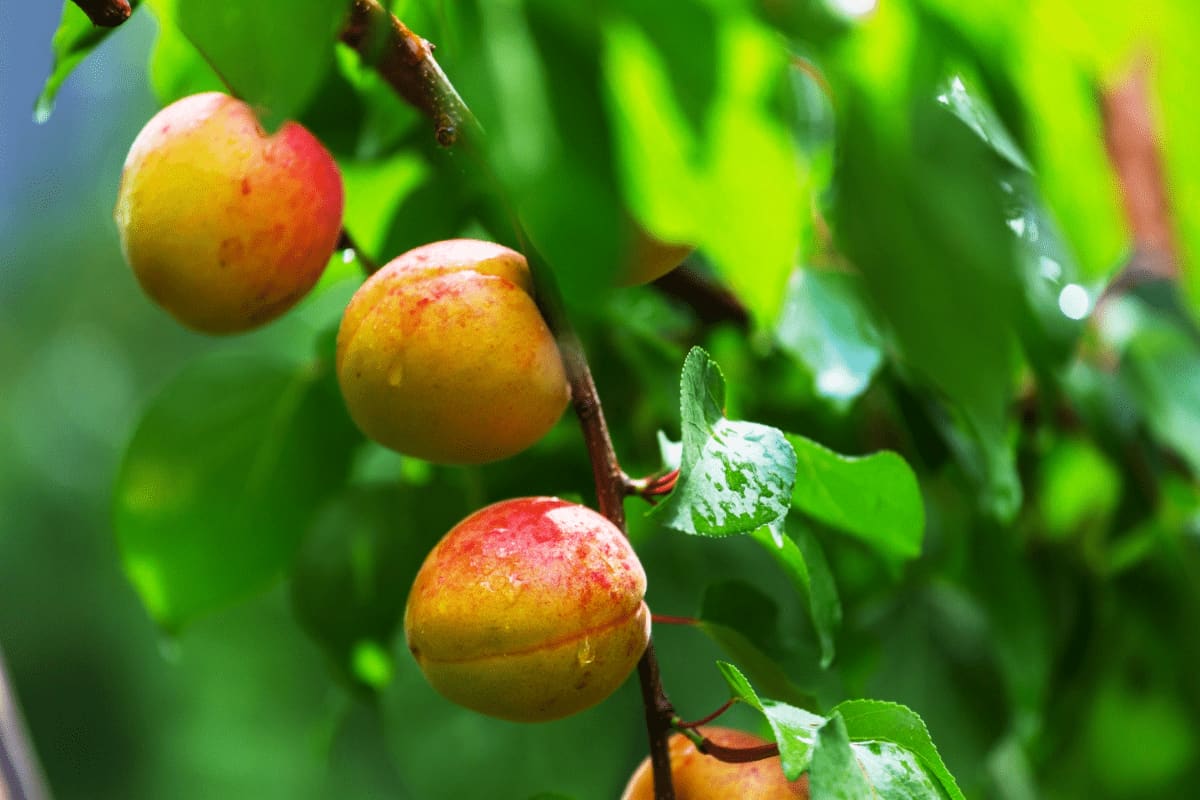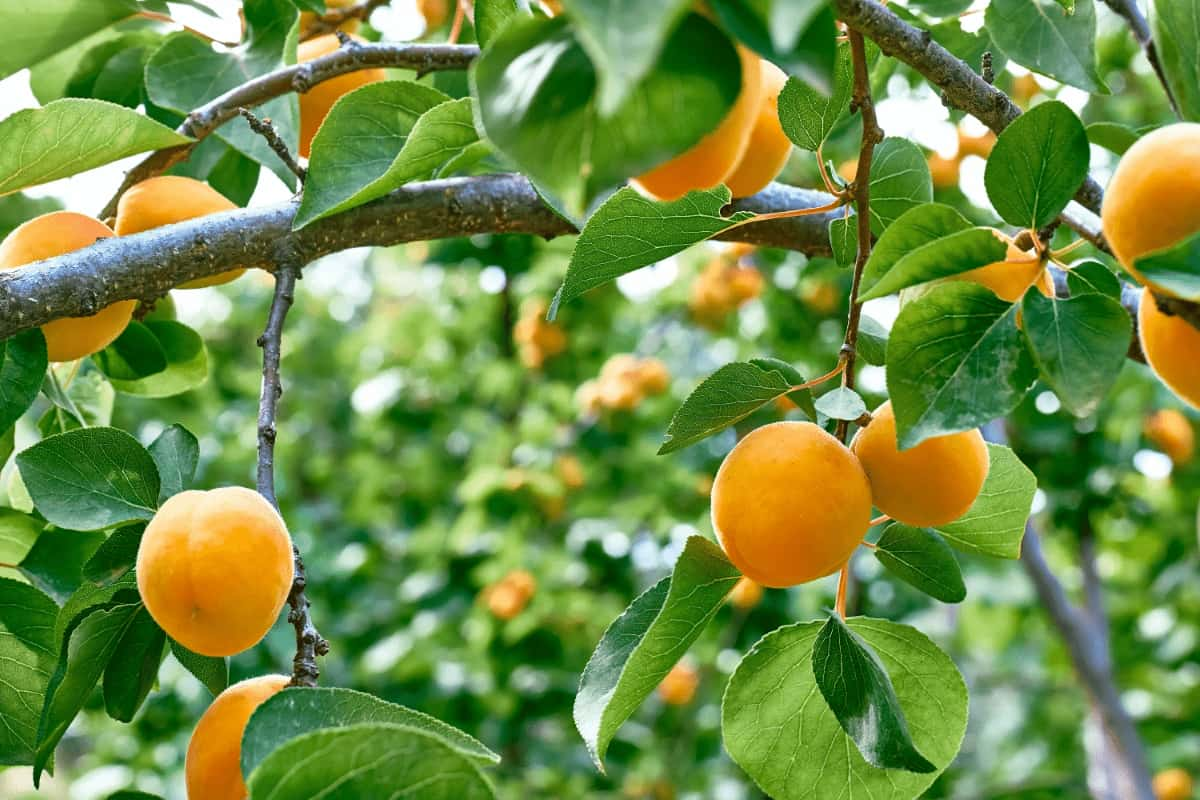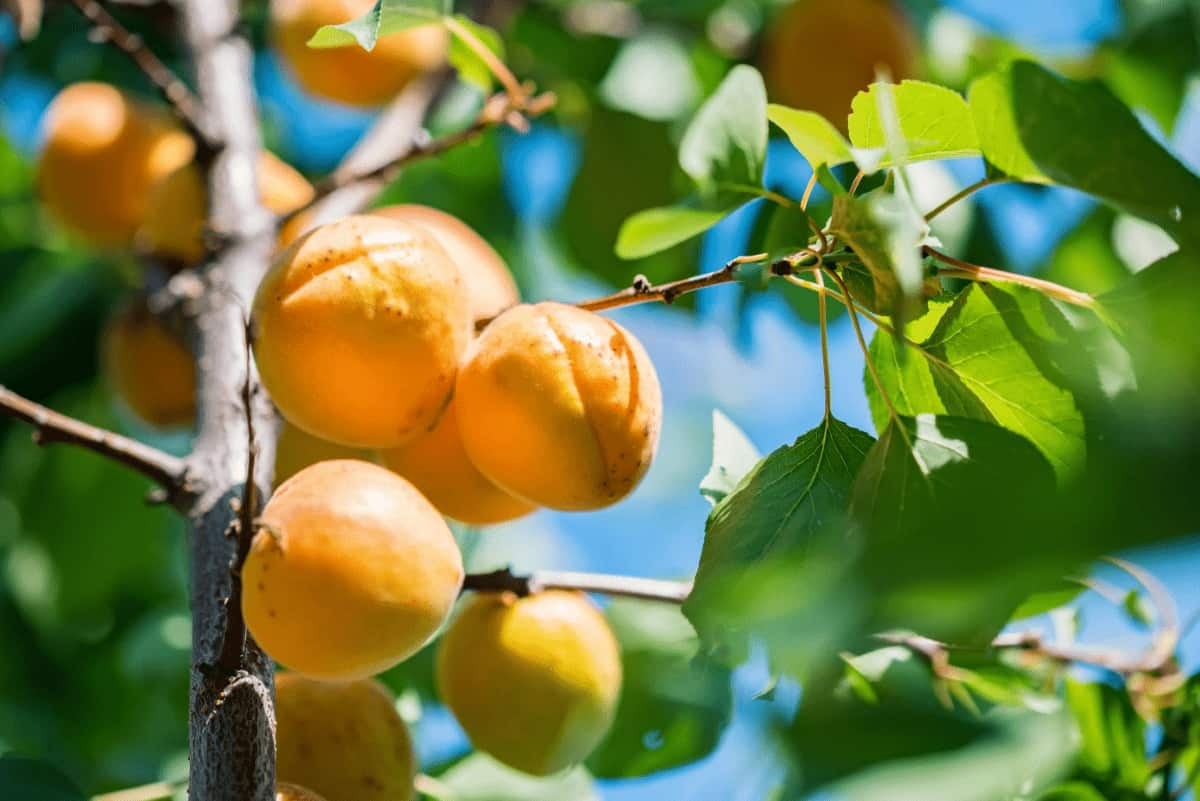Controlling pests on apricot trees ensures a healthy and productive harvest. Apricots are susceptible to various pests that can damage the fruit, leaves, and overall tree health. While chemical pesticides are commonly used for pest control, many people are now looking for natural and organic alternatives to protect both the environment and the quality of their fruit. In this guide, we’ll discuss how to control apricot pests using natural and organic treatments.

How to Control Apricot Pests Naturally
Apricot Pests: Identifying the Most Common Pests and Their Impact on Your Crop
Aphids: Aphids are small, soft-bodied insects in various colors (green, black, brown, etc.). They feed on the sap of the apricot tree and can often be found clustered on the undersides of leaves. Aphids can cause stunted growth, distorted leaves, and reduce the overall vigor of the tree. They can also transmit plant viruses.
Peach Twig Borer: The peach twig borer is a small, pinkish caterpillar that tunnels into the branches and shoots of apricot trees. The adult is a small, mottled gray moth. Larvae tunnel into the twigs, causing wilting and dieback. This can weaken the tree and reduce fruit production.
Plum Curculio: Plum curculio is a small, brown weevil with a distinctive curved snout. The adult creates a crescent-shaped scar on the fruit when laying eggs. The larvae tunnel into the fruit, causing deformities and rendering the fruit unmarketable.
Codling Moth: The codling moth is a mottled brown moth with distinctive coppery markings on its wings. The larvae are creamy-white with a brown head. The larvae tunnel into the fruit, leaving behind brown frass (excrement) and causing the fruit to become misshapen and unmarketable.
Thrips: Thrips are tiny, slender insects in various colors (yellow, brown, or black). They feed on the leaves, causing them to become discolored and distorted. Severe infestations can reduce fruit quality and overall tree vigor.
Using Neem Oil to Control Apricot Pests: A Safe and Effective Method
Extracted from the neem tree, it disrupts insects’ feeding and reproductive processes while being harmless to humans and beneficial insects. It is a safe and effective natural pesticide for controlling apricot pests. When applied to apricot trees, neem oil deters and kills common pests like aphids, caterpillars, and mites. It also acts as a natural fungicide, protecting against diseases. It is an eco-friendly alternative to chemical pesticides, promoting a balanced ecosystem in apricot orchards.
The Role of Beneficial Insects in Controlling Apricot Pests: Introduction of Predatory Insects
Beneficial insects play a crucial role in apricot pest management by serving as natural predators that keep pest populations in check. These beneficial insects, such as ladybugs, lacewings, and parasitic wasps, feed on aphids, caterpillars, and other harmful pests that can damage apricot trees and fruit.
In case you missed it: How to Control Grape Pests Naturally: How to Get Rid of Them with Natural and Organic Treatment

Introducing these predators to the apricot orchard creates a biological control system, reducing the need for chemical pesticides. This approach minimizes environmental impact and helps maintain a balanced and healthy ecosystem in the orchard, promoting long-term sustainability and better fruit quality.
Companion Planting: How Planting Certain Plants Together Can Deter Apricot Pests
Companion planting involves strategically planting certain crops near apricot trees to deter pests and enhance overall orchard health. For example, marigolds release compounds that repel nematodes, aphids, and other apricot pests. Garlic and chives can help deter insects like aphids and Japanese beetles.
These companion plants act as natural pest repellents, reducing the need for chemical pesticides and creating a more balanced ecosystem. Additionally, they can attract beneficial insects that prey on apricot pests. By carefully selecting companion plants and arranging them in the orchard, growers can improve pest management, increase pollination, and support the well-being of their apricot trees.
Crop Rotation: How Rotating Your Apricot Crop Can Help Control Pests
Crop rotation changes the location of apricot trees in the orchard over successive growing seasons. This disrupts the life cycles of apricot pests and diseases, preventing them from building up in the soil. Pests and pathogens that overwinter in the soil are less likely to find their host plants in the following year, reducing their impact. Crop rotation helps maintain a healthier apricot orchard, minimizes the need for chemical treatments, and improves pest and disease management over time.
Using Diatomaceous Earth to Control Apricot Pests: A Non-Toxic and Organic Method
Diatomaceous earth (DE) is a natural, non-toxic, and organic method for controlling apricot pests. It consists of finely ground fossilized diatoms and acts as a desiccant, drying out and dehydrating insects that come into contact with it. Diatomaceous earth (DE) is safe for humans and animals but deadly to many pests like aphids, beetles, and caterpillars. When applied as dust or a barrier around the apricot trees, it forms a protective layer, effectively deterring and controlling pests without harmful chemicals, making it an environmentally friendly choice for pest management.
In case you missed it: How to Control Kiwi Pests Naturally: How to Get Rid of Them with Natural and Organic Treatment

Traps and Barriers: How to Use Traps and Barriers to Control Apricot Pests
Traps and barriers are effective tools in apricot pest control. Pheromone traps can disrupt the mating patterns of insects like codling moths, reducing their populations. Sticky traps catch flying pests, such as aphids or whiteflies. Tree trunk barriers, like sticky bands or collars, prevent crawling insects like ants from reaching the apricot fruit.
Additionally, row covers and netting create physical barriers to protect the crop from birds, insects, and other pests. Proper placement, maintenance, and timing are crucial for the success of these techniques, reducing the need for chemical pesticides and promoting a more eco-friendly pest management approach.
Biological Control: How to Use Parasitic Wasps to Control Apricot Pests
Parasitic wasps, such as Trichogramma and Aphidius species, are valuable allies in apricot pest control. To utilize them effectively, release these beneficial insects into the apricot orchard during the appropriate pest activity period. For example, Trichogramma wasps target moth pests like codling moths. Aphidius wasps are efficient aphid predators. These parasitic wasps lay their eggs inside or on the problems, ultimately killing them. Provide suitable habitats, such as flowering plants, to attract and sustain these beneficial insects in the orchard.
Integrated Pest Management (IPM): A Holistic Approach to Controlling Apricot Pests
It involves regular monitoring of pest populations, which helps determine the need for action. IPM emphasizes preventive measures like maintaining orchard hygiene, introducing beneficial insects, and using pheromone traps. When necessary, selective and least-toxic pesticides are employed as a last resort.
In case you missed it: How to Control Lemon Pests Naturally: How to Get Rid of Them with Natural and Organic Treatment

The goal is to minimize environmental impact while safeguarding crop health. By considering the ecosystem as a whole, IPM aims to create a balanced, sustainable environment in the apricot orchard, reducing the risks associated with excessive chemical pesticide use and promoting healthier, more productive apricot crops.
Conclusion
In conclusion, employing natural and organic treatments is a sustainable and effective approach to apricot pest control. These methods protect the environment and promote healthier, higher-quality apricot crops. By prioritizing eco-friendly solutions, growers can harmonize the harmonization of pest management and ecological well-being.
- Deworming Schedule for Dogs/Puppies: A Beginners Guide
- How to Prevent and Control Parasites in Goats
- Beneficial Insects in Pest Management
- Natural Solutions for Pest Control in Flower Gardens
- Types of Fungicides Used in Agriculture
- Common Issues in the Fruit Development Stage of Pomegranate Farming
- Fruit Development Issues in Papaya: Easy Solutions and Treatment
- Soil-Borne Diseases and How to Protect Your Plants
- Practices to Prevent Disease Spread in the Garden